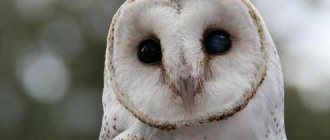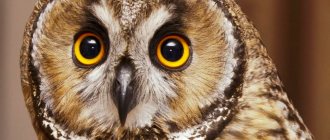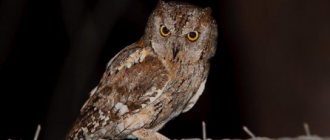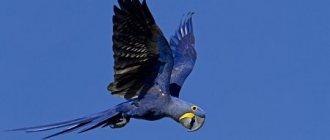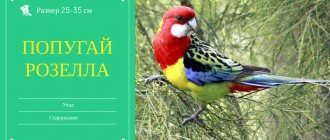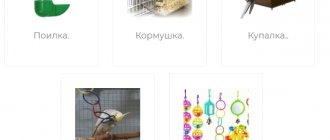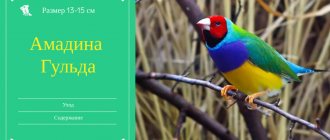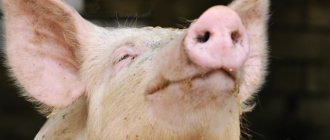- Birds
More and more often, not the usual cats, parrots and hamsters, but exotic animals are being adopted as pets. Owls have become especially popular. There are thousands of videos online of people showing off, holding and petting their apartment predators. But an owl is a wild bird, accustomed to living and hunting in the wild. Is it worth getting this feathered friend for your pet?
Domestic owl: how much does it cost and where to buy it
Many people dream of having a pet. And while some enjoy the company of cats, dogs and fish, others make an unexpected decision - to get themselves an owl. This bird has become in great demand in recent years; the price of owls usually ranges from 9,000 to 15,000 rubles. Sometimes the price can seriously increase depending on the specific species and characteristics of the bird. However, even this does not become an obstacle to buying an exotic pet.
Domestic owl: how much does it cost and where to buy it.
Owls, as you know, are nocturnal predators, and therefore a domestic owl will be most active in the evening, at night and early in the morning. In addition, the digestive system of owls has a special structure, and these birds should be fed with live food: field mice, day-old chicks, quail.
Care
All owls bathe with pleasure and a lot. They can do this in a shallow basin, which you should place in the room and regularly change the water in it.
Did you know? In flight, an owl can reach speeds of up to 24 m/s.
Thorough cleaning will also have to be done regularly. Dirt provokes the spread of various infections, so don’t be lazy. In addition, the droppings have a pungent, unpleasant odor. When cleaning an owl's living space, you should not use chemical or strong-smelling detergents.
A predator by nature, the bird is very smart, it sees and understands everything. Your concern, which is expressed in cleaning her home, will not go unnoticed by her. This circumstance, in turn, will help you make better and faster friends.
Why is domestic owls so popular?
The question of where to buy an owl became incredibly relevant immediately after the release of the famous film about the young wizard, Harry Potter. After all, everyone knows that when going to the wonderful Hogwarts school, the guy bought himself this particular pet. His faithful owl became not only a great friend, but also a postman who brought letters.
The love for the fairy-tale film was so strong that hundreds of children around the world began to dream of entering such an educational institution. But realizing that this would not be possible, parents made do with purchasing owls for their beloved children for the New Year and Christmas.
Today, despite the decline in popularity of the once beloved film, owls continue to be in demand. The price of owls makes it possible to become the owner of this pet.
Purchasing a pet
are suitable for keeping are those that are distinguished by their unpretentiousness and mental balance (tawny owl, barn owls, owls). You should only buy an animal from specialized nurseries that practice banding birds. There must be a mark on the ring that matches the information written in the documentation for the animal.
Important!
There is no need to think about how to catch an owl. Wild birds are difficult to train, begin to miss nature and are capable of carrying pathogenic bacteria. Domesticating a bird from the forest is very dangerous and inhumane.
Small owlets are best suited for domestication. They tolerate the adaptation process more easily and are several times more pliable when trained. The cost of an owlet can be 12,000 rubles. Rare species are valued twice as much.
Is it worth having an owl in your apartment?
An owl is a difficult pet to keep, so before getting this cute, furry creature, you need to carefully weigh the pros and cons.
An owl will always remain a predatory animal, and one cannot expect affection from it like a dog or cat. The biorhythms of owls are significantly different from human ones - at night, when household members are resting, a feathered friend will fly around the room and scream.
Representatives of the owl family are difficult to train - it is difficult to explain to them what can and cannot be done in an apartment. As a result, furniture, clothes, curtains and everything that the pet gets to will be damaged and dirty.
Note! Maintaining cleanliness in a house where an owl lives is an extremely difficult task. The bird will relieve its natural needs throughout the house, and during molting it will be necessary to clear the rooms of feathers.
During the mating season, a feathered pet most often finds a mate in its owner. Since owls are very attached to their partners, the bird will protect its other half from anyone it considers an enemy, that is, from guests and other family members.
On a note! Keeping an owl and other pets, especially small ones, in the same apartment is unacceptable. Sooner or later, the feathered pet will still try to attack them, since in his eyes they are an object for hunting.
Representatives of owls have very sensitive hearing, so the likelihood of sharp sounds should be minimized so as not to expose the bird to additional stress.
Owls have strong, powerful claws that leave deep scratches on skin and things. Owls live for about 50 years, which can be considered both an advantage and a disadvantage. If it becomes necessary to transfer the bird to another owner, it may not survive such serious changes and die.
Helpful advice! Owls have very powerful, sharp claws, and it will be difficult to avoid scratches and minor wounds even if the pet is in a good mood. For this reason, all household members should pay special attention to the choice of clothing - it is better to cover your arms and shoulders with dense material that the bird cannot penetrate.
What types of owls are there?
Owls are birds of prey that belong to the owl family and live mainly in Europe, Asia and North America. They have dense feathers in shades of light, gray and brown, but some members of the family are completely white. In nature, these birds play an important role - they destroy small rodents that cause serious harm to plants and humans.
Note! All owls have similar structural features of the body and head, but differ from each other in size and wingspan.
Their head is large, with lush plumage, and their face looks like a large disk formed by spherical plumage. A characteristic feature of birds is their large eyes, which allow them to hunt at any time of the day or night. Owls also have ears, but their structure differs from the hearing apparatus of mammals - they do not have an external shell and are located asymmetrically, thanks to which birds hear perfectly. To hunt small birds and rodents, owls use strong paws with sharp claws, with which they instantly grab and kill prey.
The largest owls are considered to be tawny owls, eagle owls and snowy owls - their wingspan is 1.2-1.5 m. Keeping such birds in an apartment is extremely dangerous due to their large size - in captivity they most often live in zoos.
Interesting Facts
- Keeping owls in apartments became especially popular after the release of the Harry Potter film. Hedwig became one of the “heroines” of the magical story. Given the popularity of this film, it is not difficult to imagine how many parents have heard requests to purchase such a pet.
- In nature, owls live on average 10 years. In captivity, life expectancy can increase by 30 years.
- There are species of owls that live in the tropics, eating fruits and plants. Some species can remain without fluid for a long time. Instead of water, they drink the blood of their victims.
- Owls can rotate their heads almost 270°. And their eyes are located not on the sides, but in front of the head.
- If you don't pay attention to the owl, it will sit and scream heart-rendingly. These sounds are difficult to bear.
What types of owls are suitable for keeping at home?
Few people know, but today there are a huge number of owls of a wide variety of colors and sizes. Breeders do not sit still and are actively involved in breeding purebred breeds. Selling exotic birds can bring good money, so this type of business is actively thriving.
Small members of the family are more suitable for home keeping:
- long-eared owl;
- short-eared owl;
- tawny owl (gray, long-tailed);
- pygmy owl;
- little owl;
- Scops Owl.
The most popular of all representatives is the short-eared owl. The birds are not large in size, which is especially convenient for keeping at home. In addition, owls are also in demand, although it is worth noting that the birds are not very adapted to living with humans.
Short-eared owl. A bird of the owl order with short ear tufts of feathers consisting of only 3-4 feathers. Rust-colored above with dark and whitish longitudinal spots, lighter below with simple dark brown rod spots. Distributed everywhere, with the exception of the hot zone. It nests in low-lying damp places, usually along the outskirts of swamps. The nest is a depression in the soil, sometimes lined with moss.
Short-eared owl (Click on photo to enlarge).
Tawny Owl (gray, long-tailed) (Click on photo to enlarge).
Tawny owl (grey, long-tailed). This is one of the largest owls. The main distinguishing feature of the species is a long, wedge-shaped tail with dark stripes: when an owl sits on a tree, the tail protrudes far from under the folded wings. The general color of the dorsal side is whitish-buffy with a brown longitudinal pattern and faint transverse markings on large feathers. The flight and tail feathers are brownish-buff, with a dark brown transverse pattern. The ventral side is whitish-buff or pure white with distinct brown longitudinal spots. The facial disc is light, bordered with small variegated feathers. There are no feather “ears”. The fingers are feathered to the claws. The irises of the eyes are dark brown, the beak is yellow, and the claws are black.
Long-eared owl. Externally, the long-eared owl resembles an eagle owl, but is much smaller - the size is 37-39 cm. It has small tufts of feathers on its head that surround the ears and improve hearing. This species of birds is the least aggressive towards its relatives, and has a fairly friendly disposition. Sparrow owl. A miniature representative of the owl family - the body length is 20 cm, the wingspan is 40 cm, and the weight is 60-80 g. It lives throughout almost the entire European continent and is most often used as a pet. It feeds mainly on small insects.
Long-eared owl (Click on photo to enlarge).
Great Sparrow Owl (Click on photo to enlarge).
Little owl. The body length of the little owl is 25 cm, weight - about 170 g. Habitat - the southern and central part of the European continent, North Africa and Asia. Hunts insects, small rodents and lizards.
Scops owl. A miniature species of owl, the body length is 14-20 cm, weight ranges from 55-135 g. Scops Owls have grayish-brown plumage and large eyes with yellow or orange irises
Little owl (Click on photo to enlarge).
Scops Owl (Click on photo to enlarge).
Conditions for keeping an owl at home
Before you figure out where to buy an owl, you should find out how to care for your new pet. Unlike many domestic birds, an owl will not live in a cage. Otherwise, the pet may be seriously injured and die. Therefore, before purchasing a bird, you should prepare in advance the most suitable room for it, and take care of the proper “equipment” of your apartment or house.
The best option is to provide the bird with a spacious enclosure where it can fly freely, because this is vital for owls. If it is not possible to equip an enclosure, then you can prepare an ordinary room in a special way. In the most extreme cases, owls are kept in cages, but this is a serious harm for them: the owl can easily get hurt on the bars of a cramped cage when it tries to spread its wings.
So, preparing a room for keeping a domestic owl comes down to the following. It is necessary to remove all objects that a domestic owl could knock over or damage. It is best to curtain the windows in the room with fairly thick curtains, because a bird can get entangled in light tulle or get injured trying to fly through the glass. On the walls of the room it is necessary to make “perches” for the domestic owl - special wooden or iron “boughs” that will replace the branches of a real tree for the owl.
It is best to allocate a separate room for the bird. After all, she:
- prefers a nocturnal lifestyle. It is with the onset of darkness that the owl begins to fly and make characteristic sounds;
- in order to feel comfortable while flying, the bird must have the appropriate amount of space at its disposal;
- she will not relieve herself in a strictly designated place.
To provide a bird with a decent existence, it is best to equip a special room or room for it. To prevent cleaning from taking too much time, it is best to lay newspapers on the floor. It is also important to attach shelves and poles to the walls on which the birds will sit. To prevent the owl from harming itself, lampshades, tulle and curtains should be removed from the room.
Catering is an equally popular issue when deciding to get yourself an owl. It is important to understand that the owl is a predator, so you definitely won’t be able to get by with grains and vegetables here. The bird requires meat, and it must be of its usual type. Therefore, you should not cut purchased meat into pieces; the food should be in its original form - with claws and hair. One of the owl's favorite delicacies are mice and chickens, which will have to be constantly acquired and killed. Now it’s worth considering whether it’s worth making such sacrifices.
How to care for a pet owl
On the first day after purchase, you should not frighten the owl or immediately pick it up - the bird should get used to the new place. To do this, you need to open the box and leave the new pet alone to look around. You can offer the owl water and food after 1-2 hours - if it is still small and cannot tear the carcass with its claws, you need to cut the meat along with the bones.
A domestic owl requires careful care, attention and patience.
You can offer food to the bird from your hands so that it quickly gets used to its new owner, but do not make sudden movements or scream. There should always be a container of fresh water in the room where the bird is located. In the future, you will need to carefully monitor the condition of the owl - the behavior of a sick pet is significantly different from the behavior of a healthy one.
About 10 hours after eating, the bird should regurgitate an odorless clump of feathers and bones. The absence of litter, the appearance of an unpleasant odor or blood impurities indicate that the pet is sick.
Along with the pellet, the owl owner needs to examine the droppings from time to time - it should be white and liquid, with small dark solid fragments. Diseases are indicated by an unpleasant odor, a change in the color of stool to yellow or brown, and admixtures of blood and mucus.
A healthy pet is lively, playful and curious. A sick individual becomes apathetic, sits in one place for a long time, constantly squints, and its feathers become dull and ruffled.
A sick owl looks lethargic and apathetic
Diseases in owls develop rapidly - in the morning a bird can be cheerful and active, and a few hours later die from the disease. For this reason, you should always keep your ornithologist’s phone number at hand, and when the first symptoms of the disease appear, immediately take your pet to the veterinarian.
Owls are funny and interesting birds, but extremely difficult to keep and care for, and as a pet they are suitable only for those owners who are willing to spend time and money on them. Before buying an owl, you need to carefully weigh the pros and cons so as not to turn the life of the bird and your own existence into real agony.
About health
After purchasing a bird, it is necessary to conduct a general examination: test the droppings for psittacosis, mycoplasmosis, salmonellosis and worm eggs. Ideally, you need to make an appointment with a highly specialized ornithologist who will conduct a general examination of your pet and, if necessary, prescribe additional tests.
I strongly do not recommend risking your bird's health by trying to treat it at your local veterinarian's office. Working with birds has many specific nuances, often unknown to specialists working with mammals.
You need to visit an ornithologist once a year, even if the bird and you are not bothered by anything. There are diseases that develop over a long period of time and are hidden.
What to feed your pet owl
Under natural conditions, owls eat small insects, rodents, fish and amphibians, and sometimes plant foods. The best option for these birds is mice, rats, rabbits and chickens (depending on the size of the pet), approximately two individuals per week. In this case, you need to take into account the age and characteristics of the pet - adult owls who know how to hunt can be offered live rodents, while young ones are better fed with the carcasses of freshly slaughtered animals, or at least frozen.
The owl can be fed small birds and animals, live or recently killed.
Owls need to be given shrimp bones and shells to help maintain normal digestion.
Not all pet lovers are ready to watch the hunting and real killing that takes place in their apartment, or to kill living creatures themselves, but it will be extremely difficult to find an alternative.
The digestive system of owls is designed in a special way - they swallow small animals whole, along with bones and fur. After digestion of food, all inedible remains are formed into a dense lump, which the bird regurgitates. It is called a pellet and is an important element in the digestion of owls, as it allows the inner lining of the stomach to renew itself.
If you exclude this stage from the process of digesting food, the entire functioning of the gastrointestinal tract will be disrupted. Owls need to be given bones and shrimp shells to help maintain normal digestion.
In case of shortages of live food, you can replace it with pieces of meat with bones, rolling them in wool, feathers, crushed shrimp shells, with the addition of grated carrots and other vegetables. If an owl permanently lives in an apartment, you need to feed it low-fat food, otherwise there is a high probability of obesity and health problems. For birds that are trained and trained, the fat content of the feed does not matter.
Another important aspect is that owls often stock up on food and eat rodent carcasses that are already thoroughly rotten. Birds that live in apartments also have this peculiarity - they scatter half-eaten leftover food, and eat it only after a few days. There is no point in fighting this habit, as it is an important factor in maintaining normal digestion and fermentation in owls.
To diversify your pet owl's food and provide it with all the substances necessary for health, you can give it fruits, vegetables, berries, dairy products, as well as live insects. These include crickets, locusts, any cockroaches, mealworms, tobacco hawk moth larvae and wax moths. Before feeding birds insects, they can be fed natural foods to increase the nutritional value of the live food.
On a note! You can collect insects for pet owls yourself, but this should only be done in environmentally friendly areas away from major highways. Birds should not be fed insects collected from plants treated with pesticides or other chemicals.
Where to buy a pet owl in Russia
If the future owner of an owl is not afraid of the difficulties associated with keeping it, you can move on to buying an owl, but purchasing a bird of prey is more difficult than purchasing a dog or cat.
Important! An owl must be purchased from an official nursery, because at “bird markets” they sell wild birds caught from nature, and this is, at a minimum, illegal.
Owls in nurseries are ringed and have their own documents: the number of the bird according to the documents and the number on the ring must necessarily match. These establishments have all the necessary licenses and documents, which confirms the quality and health of the pet. It is best to purchase small owlets - they will be able to get used to captivity more easily.
It is much easier to buy food for an owl than to buy food for yourself. It is important to understand that you will definitely not be able to find an exotic bird on the market. Therefore, you can try to make a purchase online. However, we should not forget about the huge number of scammers who engage in poaching and illegally catch unfortunate animals.
Note! When deciding to buy yourself an exotic pet, special preference should be given to young special ones. At a young age, owls adapt more easily to humans.
When purchasing, you should avoid overly aggressive individuals and those that have a suspicious condition. The presence of external injuries can seriously affect the bird's health.
On a note! The birds sold in nurseries are tame and healthier than wild birds, but it is still better to show the purchased individual to an ornithologist veterinarian and get tested.
The owl must be transported in a closed box or box - a cat carrier or a regular cage will not be suitable for this purpose, as the pet will begin to fight against the bars and can cause serious harm to itself.
An owl is not the best gift for a child. There are a lot of hassles and problems with this pet, so it is important to think carefully about everything before getting such an animal. It is only in fairy tales that an owl looks innocent and cute; in fact, it is a dangerous predator that can seriously harm its little owner.
Note! Wild owls can be carriers of a number of zoonotic diseases - these include psittacosis, salmonellosis, trichomoniasis, chlamydia and many other infections. Accordingly, keeping an owl raised in the wild can be extremely dangerous for the health of all family members.
You will need to find a personal healthcare provider for your bird.
It is a specialist in the treatment of birds, and not just a veterinarian. In Russia, the situation with doctors who understand the treatment of birds is extremely depressing. You can count the number of specialists on one hand and most of them practice in Moscow.
Even if you buy a bird from a nursery, this does not provide any guarantee of its health. You immediately need to show the bird to a doctor, pass all the required tests and quarantine the animal.
Even if everything was fine with the chick in the nursery, it doesn’t mean that he won’t get sick at your place in the near future. A sudden change of environment and change in microclimate reduces the bird’s immunity and provokes sudden illnesses.
Birds have a very fast metabolism, so immediate help is usually needed. Your veterinarian’s phone number should be in your “favorites”, and the doctor himself should be ready to answer the call even at night.
Bird doctors: Valentin Kozlitin Maria Markina
4
. Place.
